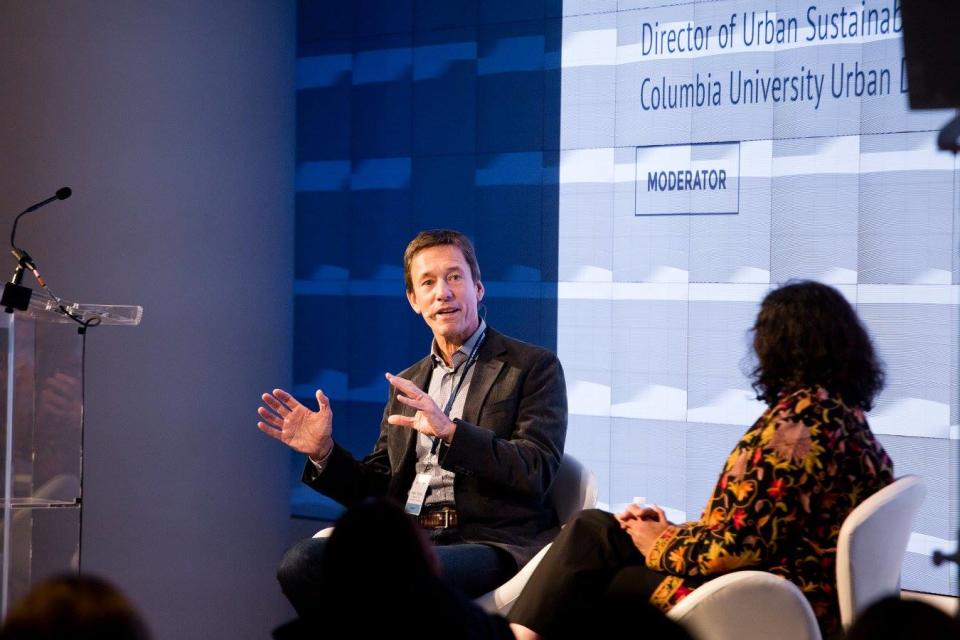Why Trump’s election hasn’t crushed the hopes of environmentalists
The mood was a little grim at a gathering in New York two weeks ago for corporate and nonprofit types looking to advance social change—especially when the discussions turned to the environment, an issue that doesn’t seem to be a priority for President-elect Donald Trump.
And yet participants weren’t quite ready to sign up for any sky-is-falling thesis.
“It would be better, for sure, if the Trump administration weren’t obstructionist,” said Nature Conservancy CEO Mark Tercek at the NationSwell Summit.
“But we’re not doomed if that’s the case,” he continued.
Why? Because giant multinational companies are now advancing sustainability agendas rooted in bottom-line concerns. Tercek took a moment to compliment not an obvious ecological champion like, say, Apple, but a corporation that hasn’t always been seen as green: “Walmart is being enormously constructive.”
Not a crazy idea
The idea of turning one’s environmental attention from an uninterested or unmotivated White House and instead looking to large firms with a nationwide or international scale isn’t new.
Walmart (WMT) pleasantly surprised many activists during the George W. Bush administration. In 2005, then-CEO Lee Scott said that Hurricane Katrina had changed his thinking and committed the firm long-term to using 100% renewable energy, creating zero waste, and selling only sustainable products.
Lee’s speech noted the underlying financial logic of these moves: “If our trucks are inefficient from a fuel standpoint, we’ll pay for that at the diesel pump.” Making Walmart’s fleet of trucks more efficient by one mile per gallon would have saved $52 million that year.
A 2008 report in the Stanford Social Innovation Review found that these initiatives, often done in concert with nonprofits like the Green Electronics Council and the World Wildlife Fund, both shrank Walmart’s environmental footprint and expanded its profits by chipping away at waste in its operations and those of its suppliers.
Eight years later, Walmart’s 2016 “Global Responsibility Report” notes substantial progress. The company met its goal of doubling the efficiency of its US fleet by 2015, which saved 650,000 metric tons of carbon dioxide—and nearly $1 billion in expenses.
(The report notes that much of this improvement was due to automated monitoring of truck drivers’ performance on the road and the resulting “well-informed conversations” management can have with them.)
Walmart has yet to hit 100% renewable energy, but by reaching 25% it’s climbed well above the 9.4% average for the US in August. In November, the company said it aims to get to 50% renewable by 2025.
“The things that I talked about today will be good business as well as doing good things for the world ,” Walmart CEO Doug McMillon said at a conference after announcing that and other sustainability goals.
The phrase “greed is good” doesn’t appear in that 2016 Walmart document or the Stanford report, but that line from the movie “Wall Street” does apply in this case. As another NationSwell Summit speaker, Energy Independence Now executive director Brian Goldstein, said: “It’s not, ‘hey, we want to save baby seals,’ but ‘this is going to make economic sense’.”
Case study: cable boxes
But what about situations where the company causing the waste doesn’t have to pay for it? That was the scenario with cable boxes, which not only cost you $10 or more a month in rental fees but also have historically been energy hogs.
The Natural Resources Defense Council studied the problem and found that cable and satellite boxes ate up 27 billion kilowatt-hours of electricity, more than $3 billion worth, in 2010. That consumption could be cut by 30% to 50%, that nonprofit’s research found.
That led to a voluntary agreement to reduce TV-box energy consumption signed in late 2013 by NRDC, the Department of Energy, cable and satellite operators, set-box manufacturers and two industry groups, the Consumer Electronics Association (now the Consumer Technology Association) and the National Cable & Telecommunications Association (now NCTA – the Internet & Television Association).
Three years later, that deal seems to be working. An August 2016 study found that TV-box energy use had declined by 15.9% overall, with energy use by digital video recorders—the most power-intensive kind—dropping by 36%.
That initiative also led to a 2015 agreement to increase the efficiency of routers, cable modems and other home network equipment. An audit a year later found that 89.6% of the hardware models covered by this deal met its efficiency standards — though you could say that meant those goals weren’t ambitious enough.
Noah Horowitz, who directs the NRDC’s Center for Energy Efficiency, credited public pressure and the cable industry’s fear of more bad PR.
“This collective pressure caused the service providers and their suppliers to focus on driving down the energy use of new and existing set top boxes,” he wrote in an e-mail, noting that President Barack Obama’s administration wasn’t crucial to that success: “Under a different White House we would have likely achieved a similar outcome.”
Horowitz noted that having only a few manufacturers of TV boxes made a corporate-focused strategy work. This market also allowed for a quick payback: “We were able to achieve immediate energy savings, rather than wait five plus years for a national standard to take effect.”
Change is still hard

It’s still important to note that Trump White House looks like to be much more hostile to energy regulations than prior administrations. Trump appointed a vocal climate-change denier, Competitive Enterprise Institute official Myron Ebell, to run the transition at the Environmental Protection Agency. And finding corporate champions will only go so far to counteract that.
Besides, many attempts to push change at the corporate level still fail. The shareholder-activist group Ceres expects a record number of shareholder resolutions on climate change in 2017—200 or so, up from 174 in 2016. But a look at its list of shareholder resolutions shows that most failed, the usual fate of resolutions not backed by management.
And many environmental problems—think of the long-standing problem of Chesapeake Bay pollution — result from the actions of a large group of smaller actors. That’s the sort of situation where a regulation or a tax, as ugly as it may be to those affected directly, is more effective than lobbying corporations directly. And Washington seems to have lost its appetite for those measures, at least for the next four years.
Email Rob at [email protected]; follow him on Twitter at @robpegoraro.


